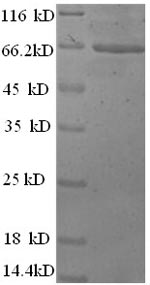Very nice to receive your inquiry.
Recombinant Mouse Actin, cytoplasmic 1(Actb),partial
CSB-RP076754m
Expression Region: 11-375aa; Partial.
Tag information:N-terminal GST-tagged
Sequence:
DNGSGMCKAGFAGDDAPRAVFPSIVGRPRHQGVMVGMGQKDSYVGDEAQSKRGILTLKYPIEHGIVTNWDDMEKIWHHTFYNELRVAPEEHPVLLTEAPLNPKANREKMTQIMFETFNTPAMYVAIQAVLSLYASGRTTGIVMDSGDGVTHTVPIYEGYALPHAILRLDLAGRDLTDYLMKILTERGYSFTTTAEREIVRDIKEKLCYVALDFEQEMATAASSSSLEKSYELPDGQVITIGNERFRCPEALFQPSFLGMESCGIHETTFNSIMKCDVDIRKDLYANTVLSGGTTMYPGIADRMQKEITALAPSTMKIKIIAPPERKYSVWIGGSILASLSTFQQMWISKQEYDESGPSIVHRKCF
The concentration range is 0.1-2mg/ml and default buffer is Tris-based buffer,50% glycerol, if you have any demand for the buffer or concentration, please remark your requirements when placing the order.
We can prepare the protein according to your demand.






